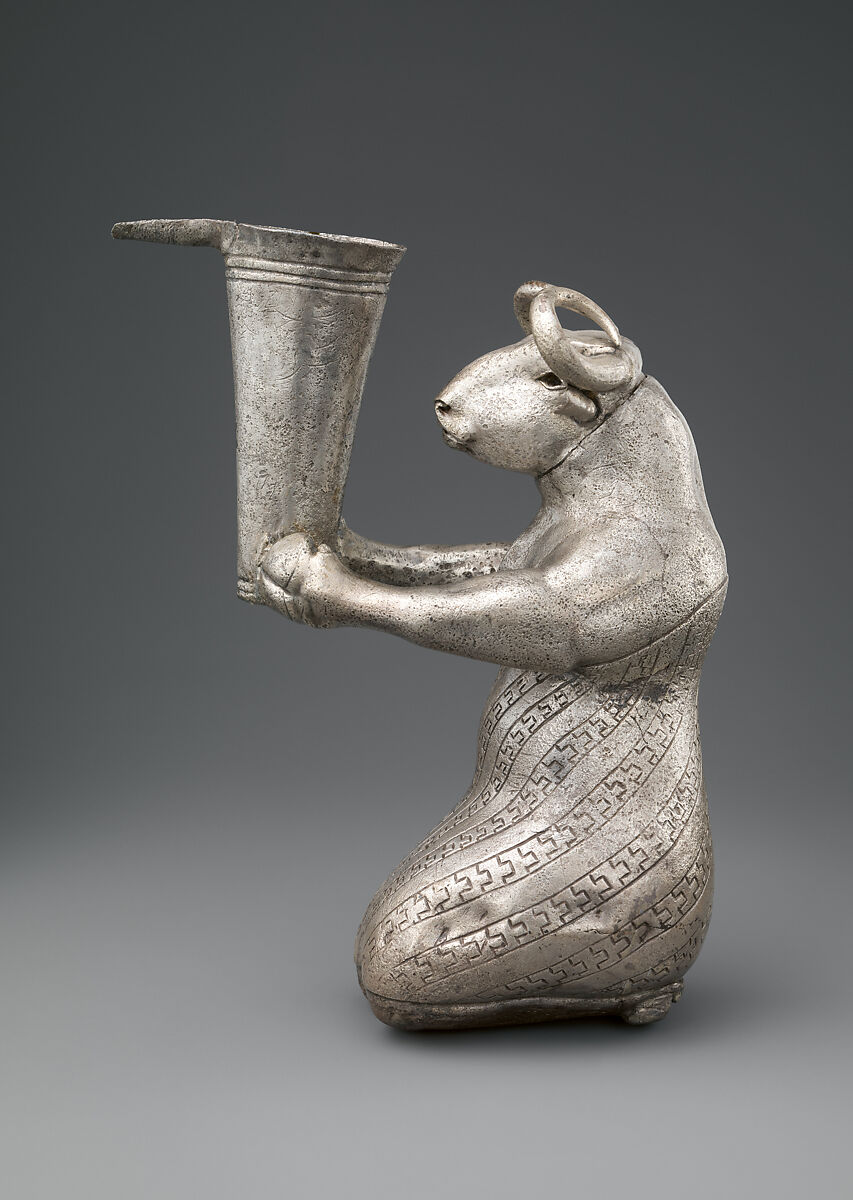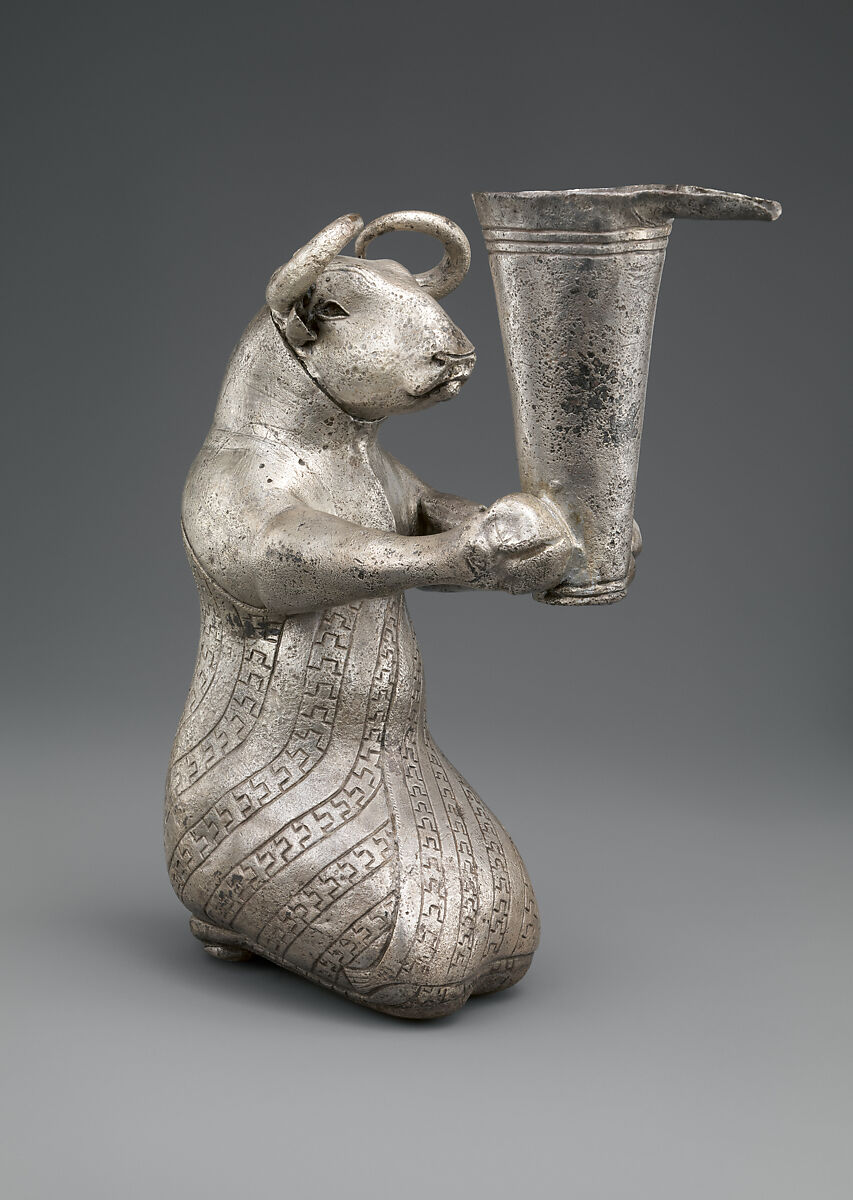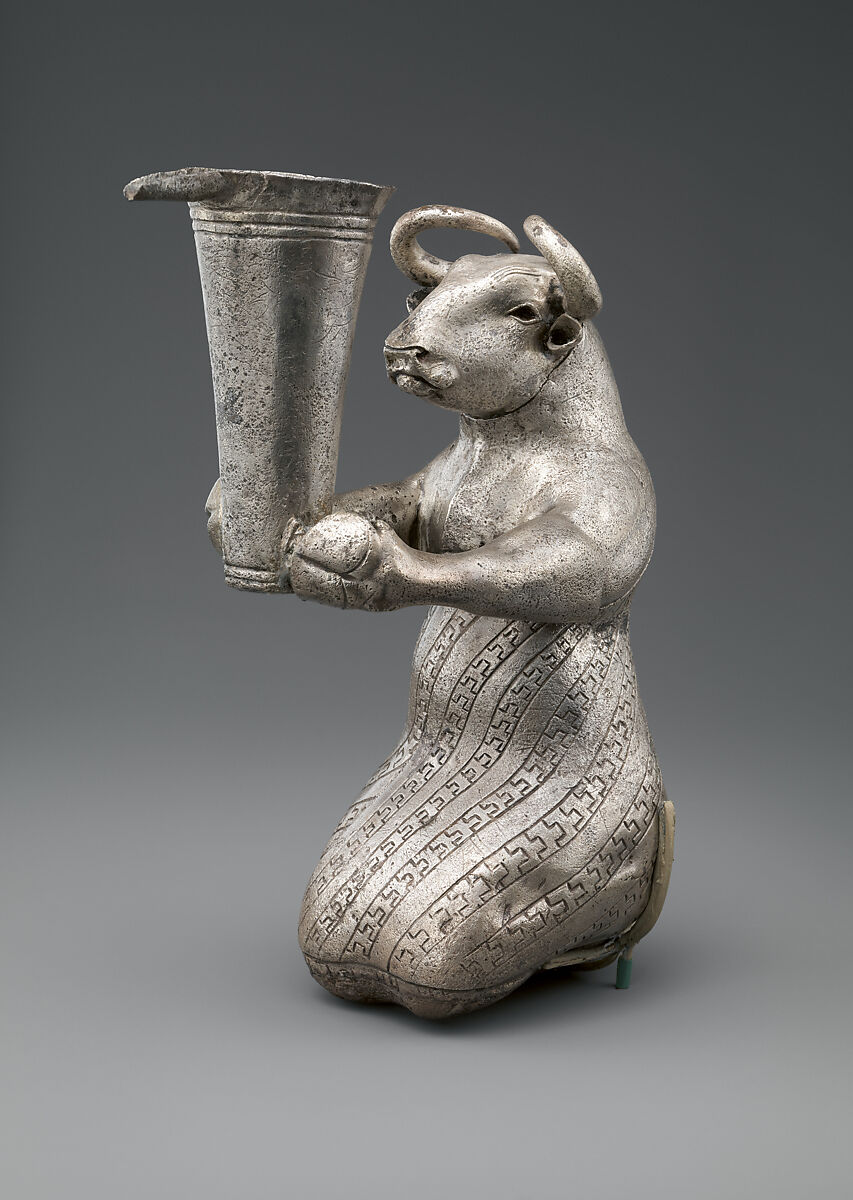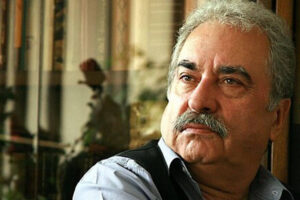The Metropolitan Museum Complex in New York is home to a 5,000-year-old statue of a cow that seems to sit on its knees just like a human. The cow holds a cup with a wide mouth in its hand. The statue was made by a person from southern Illam belonging to the “Proto-Elamite” culture, the oldest ancient Iranian civilization, and may have been used in religious rituals.
Kate Lefferts, a specialist in repairing ancient objects who worked with the Metropolitan Museum in 1970, wrote: “The cow’s height is 16.3 centimeters and it was made of 98.5 percent pure silver.” He found 5 small limestone inside the statue, which was empty. These stones were probably placed by the creators inside the statue to produce a special noise of cracks.

Donal Hansen, professor of Fine Arts at New York University, also wrote: “The statue is a wonderful combination of human and animal features. The head of the cow with curved horns has been placed on shoulders similar to those of a human, and the creature has decorated clothing which covers its kneeling legs.”
The long arms of the cow resemble those of a human but end in hooves and hold a container. Hansen recalls that the statue does not have a flat base, which means it could be placed on a hard surface by itself.

The statue was made by the Elamite civilization, an ancient region situated in southwestern Iran. This region was a primary civilization in the Copper Era. Proto-Elamites made cylindrical seals – most of which carry images of animals with human-like gestures. They were used for administrative purposes. The statue of the kneeling cow was likely made as a human-animal hybrid with a realistic appearance.
It is not clear why someone decided to make a kneeling cow some 5,000 years ago. However, according to Hansen, the stones inside the statue and the fabrics with animal textures that were attached to it indicate that they were probably used in religious rituals.

It could also be a foundation statue. These objects were placed in the soil before digging the earth to build a temple. If the statue was made as a foundation statue, it was never supposed to be seen again.







